If your car starts acting strange, stalling, jerking, losing power, it’s easy to blame something obvious like the battery, spark plugs, or fuel. But many car owners overlook a key part that often causes these issues: the fuel filter. This small component is designed to trap dirt and debris before it reaches your engine. When it gets clogged, your car won’t get the fuel it needs to run smoothly. The symptoms may start small, but they often get worse quickly. In this article, we’ll show you the most common Fuel Filter Clogged Symptoms, how to recognize them, and what to do before it becomes a bigger, more expensive problem. Whether you’re driving a compact sedan or a full-size pickup, knowing these signs can save you from a breakdown and help keep your vehicle in great shape.
Table of Contents
- What Does the Fuel Filter Do?
- When Should You Replace a Fuel Filter?
- 10 Fuel Filter Clogged Symptoms
- What Happens If You Ignore These Symptoms?
- Can You Clean a Fuel Filter or Should You Replace It?
- Where Is the Fuel Filter Located?
- How Much Does It Cost to Replace a Fuel Filter?
- How to Prevent Fuel Filter Problems
- Final Thoughts: Act Early, Save Money
- FAQs
What Does the Fuel Filter Do?
The fuel filter is like a gatekeeper between your gas tank and your engine. Its job is to block any dirt, rust, or debris in the fuel before it reaches the engine. Clean fuel is critical for smooth engine performance, and without a working filter, even small particles can clog your fuel injectors, reduce fuel pressure, and cause your engine to misfire or shut down. In most cars, the fuel filter is located either inside the fuel tank or along the fuel line between the tank and the engine.
When Should You Replace a Fuel Filter?
Fuel filters should usually be replaced every 20,000 to 40,000 miles, depending on your car and how you drive. If you regularly use lower-grade fuel or drive in dusty or harsh environments, the filter may clog faster. Check your vehicle’s owner manual for the recommended service schedule. Ignoring the replacement interval increases the chance of a clog and puts more stress on your fuel pump and engine.
10 Fuel Filter Clogged Symptoms
1. Engine Sputters While Driving
One of the most common early signs of a clogged fuel filter is engine sputtering while driving. This happens because fuel is being restricted and not reaching the engine in the steady flow it needs. You might notice your engine jerking or stumbling while you try to maintain speed or accelerate. At first, it may only happen occasionally, especially at higher speeds or when the engine is under load. But as the clog worsens, it can become more frequent and more severe, eventually leading to a complete stall if left untreated.
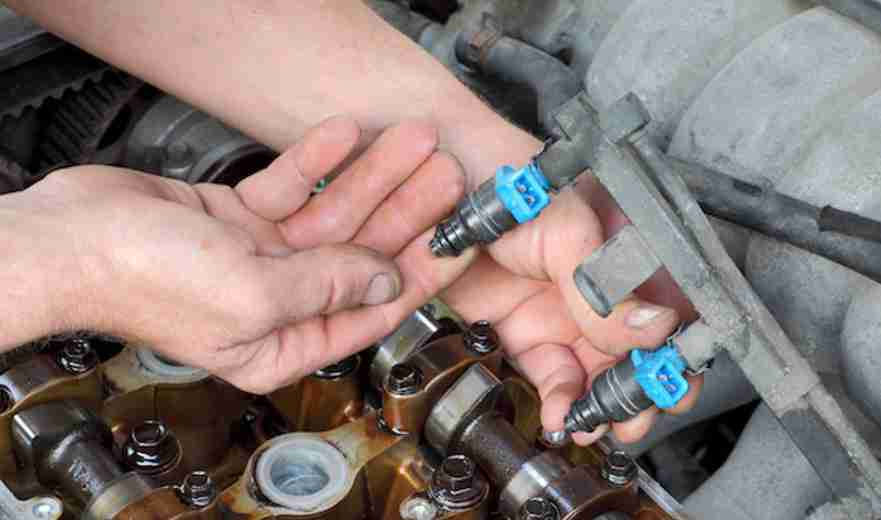
2. Trouble Starting the Engine
A healthy engine needs a steady flow of fuel to start. When the fuel filter is clogged, your engine may crank but take longer to start or fail to start altogether. This happens because the clogged filter restricts the fuel flow needed for ignition. Drivers often confuse this with battery or starter issues, but if those parts are fine, the fuel filter is a likely cause. In cold weather, the problem may be even worse due to thicker fuel and higher engine demands. Consistent difficulty starting your engine should never be ignored and may be your car’s way of warning you about a restricted fuel system.
3. Engine Stalls at Low Speeds or When Idling
If your car stalls when you’re stopped at a red light, parked with the engine running, or rolling slowly through traffic, your fuel filter might be partially blocked. When the car is idling or moving slowly, the engine requires less fuel than at higher speeds, but a clogged filter can still restrict fuel flow enough to cause the engine to stop running. This kind of stalling usually happens without warning, and while it may restart afterward, repeated stalling is a serious safety concern and should be checked immediately.
4. Poor Acceleration and Power Loss
A clogged fuel filter often makes itself known when you ask your engine to work harder, like merging onto a highway, driving up a hill, or carrying a heavy load. The engine may hesitate or feel sluggish because it can’t get enough fuel to match the power demand. You might push the gas pedal, but the car doesn’t respond the way it should. This symptom is often mistaken for transmission problems or engine wear, but it’s sometimes as simple as a dirty fuel filter standing in the way of smooth acceleration.
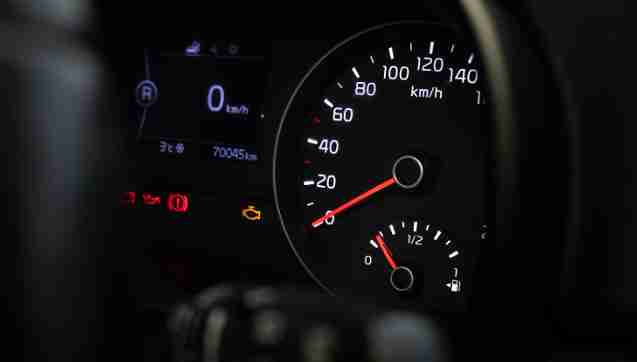
5. Engine Misfires or Jerks
Engine misfires happen when one or more cylinders in your engine fail to fire properly. A clogged fuel filter can cause this by disrupting the balance of fuel and air that’s needed for combustion. You may feel a quick jolt or series of jerks while driving, often under acceleration or climbing a hill. These misfires not only reduce performance but also cause extra wear on your engine and emissions components. If your check engine light comes on and the car feels rough, don’t wait, have the fuel system inspected right away.

6. Poor Fuel Efficiency
If you find yourself filling up the gas tank more often without changing your driving habits, it could be a sign of fuel delivery problems. A clogged fuel filter can cause the engine to run inefficiently, often burning more fuel to compensate for the lack of steady pressure. Over time, this leads to poor fuel economy and more money spent at the pump. While many things can cause reduced gas mileage, such as low tire pressure or worn spark plugs, fuel delivery issues are a common culprit and should be part of any diagnosis.
7. Rough Idling
When your car is in park or stopped with the engine running, the RPMs should stay steady and smooth. If the engine shakes, the idle feels bumpy, or the vehicle vibrates more than usual, a clogged fuel filter might be disrupting the fuel supply. Your engine is still running, but not cleanly or efficiently. This rough idling can be especially noticeable at stop signs or while waiting in traffic. Over time, rough idling may progress into stalling or engine misfires if the cause is not fixed.
8. Strong Exhaust Odor or Smoke
A clogged filter can mess with the air-fuel ratio in your engine. If too much fuel is pushed into the engine because of poor regulation, it can lead to incomplete combustion. This not only reduces performance but also creates a strong fuel smell or unusual smoke from the exhaust pipe. Sometimes the smoke is dark or smells like gas. These emissions problems often get worse over time and could cause your vehicle to fail a state inspection or damage the catalytic converter if ignored.
9. Check Engine Light Turns On
Today’s vehicles are smart enough to detect fuel delivery problems, and a clogged filter may trigger the check engine light. The exact reason could be low fuel pressure, misfires, or an engine that’s running too lean or too rich. While this warning light can mean many things, it’s important not to dismiss it. A diagnostic scan tool can help identify the root cause, and if fuel pressure codes appear, a clogged filter should be one of the first parts inspected.
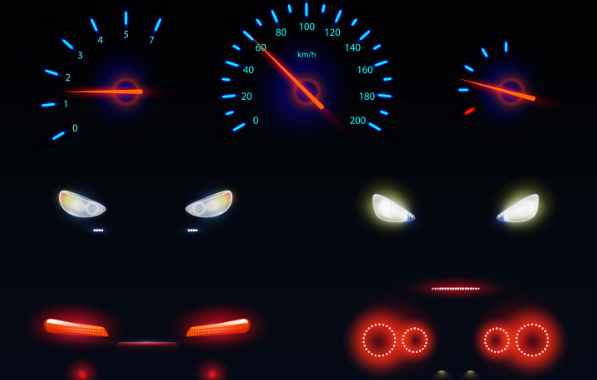
10. Hard Acceleration Leads to Engine Hesitation
If your car hesitates or stumbles when you try to accelerate quickly, such as pulling onto a highway or passing another vehicle, a clogged fuel filter could be limiting the fuel flow. During hard acceleration, your engine needs a quick and steady fuel supply. If the filter can’t keep up, your engine struggles and loses power. This hesitation not only affects performance but can be dangerous in situations where quick response is needed for safe driving.
What Happens If You Ignore These Symptoms?
Ignoring fuel filter problems can lead to serious damage. Over time, the fuel pump can overheat and fail because it’s working too hard to push fuel through a clogged filter. That turns a $20–$60 filter into a $500+ fuel pump replacement. You also risk damage to your engine from running too lean, misfires, or contamination from unfiltered particles. Delaying a simple repair can snowball into a breakdown or more expensive repairs that take longer to fix.
Can You Clean a Fuel Filter or Should You Replace It?
In older vehicles, some fuel filters can be cleaned, but most modern cars have sealed filters that need to be replaced when clogged. Even in cases where cleaning is possible, it’s often not as effective or reliable as simply installing a new filter. Fuel filter replacements are usually affordable and straightforward, especially if they’re located along the fuel line instead of inside the fuel tank.
Where Is the Fuel Filter Located?
Fuel filters are found in different locations depending on your car model. In many modern vehicles, the filter is built into the fuel pump inside the tank. In older cars, it’s often mounted along the underside of the car on the fuel line or near the engine bay. If you’re not sure where yours is, check your owner’s manual or look up your specific make and model online for diagrams and replacement guides.
How Much Does It Cost to Replace a Fuel Filter?
On average, fuel filter replacement costs between $70 and $200 in the U.S. This includes the cost of the part ($20–$60) and labor if you’re having it done at a shop. Some vehicles may have more expensive filters or require extra labor to access them, especially if the filter is inside the gas tank. DIY replacements can save money, but be sure you know how to safely relieve fuel system pressure before starting.
How to Prevent Fuel Filter Problems
You can reduce the chance of dealing with a clogged fuel filter by following a few simple habits:
- Always use good-quality fuel from reputable gas stations.
- Replace the fuel filter at the mileage interval recommended in your owner’s manual.
- Keep your fuel tank at least a quarter full to prevent sediment from being sucked into the fuel line.
- If your check engine light comes on or you notice strange performance issues, don’t wait, get your fuel system checked.
Final Thoughts: Act Early, Save Money
A clogged fuel filter doesn’t just affect how your car drives, it can affect your safety, your wallet, and your long-term engine health. The symptoms often start small, like sputtering or hesitation, but they can quickly lead to stalling, breakdowns, or major repairs. By paying attention to the warning signs, you can stay ahead of the problem and keep your car running smoothly. Replacing a fuel filter is simple, affordable, and one of the best ways to protect your vehicle from bigger issues.
FAQs
What are the first signs of a clogged fuel filter?
Common first signs include engine sputtering, hesitation, or difficulty starting. These early warnings show fuel flow is restricted.
Can a clogged fuel filter cause my car not to start?
Yes. If the filter is too blocked, not enough fuel reaches the engine, making it hard to start or preventing it from starting at all.
How long does a fuel filter last?
Most fuel filters last 20,000–40,000 miles, but driving conditions and fuel quality can shorten that interval. Always check your manual.
What happens if you don’t replace a clogged fuel filter?
Ignoring it can damage the fuel pump, reduce engine performance, cause stalling, and eventually lead to costly engine or pump repairs.
Can cleaning a fuel filter fix the problem?
In older cars, some filters can be cleaned, but most modern ones must be replaced. Cleaning is rarely as effective as installing a new filter.
How much does it cost to replace a clogged fuel filter?
The average replacement costs $70–$200, including parts and labor. DIY can be cheaper, but safety steps are important when handling fuel.
Will a clogged fuel filter turn on the check engine light?
Yes. A clogged filter can trigger the light due to low fuel pressure, misfires, or incorrect air-fuel ratios detected by the engine computer.


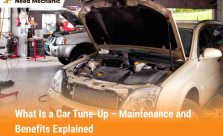

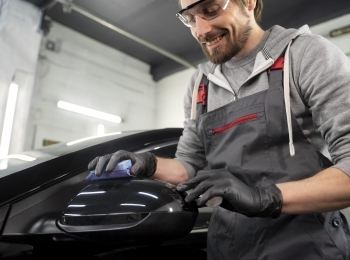

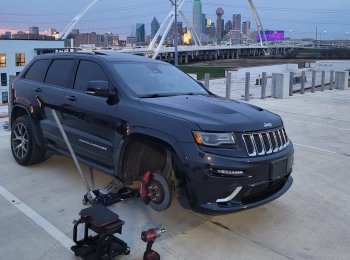





Leave a Reply